Physical Address
304 North Cardinal St.
Dorchester Center, MA 02124
Physical Address
304 North Cardinal St.
Dorchester Center, MA 02124
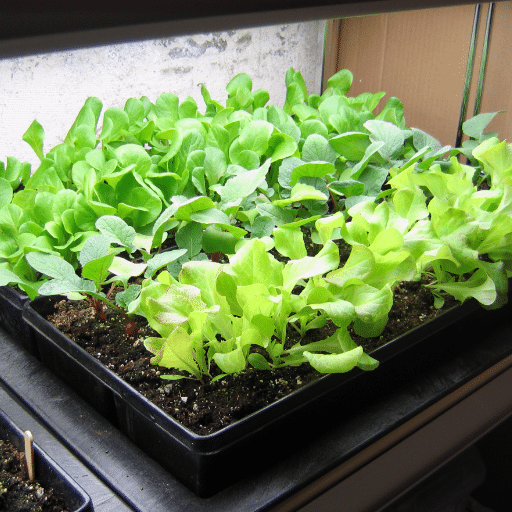
Developing lettuce indoors is a sure way of having fresh, nutrient-rich greens all year round that could be enjoyed irrespective of the weather or space constraints. From grocery savings to food waste reduction and chemical-free produce, to name a few, it is a promising sustainable option provided by growing lettuce indoors. In this article, designed for both novices and advanced gardeners, you will find time-tested tips and guides that will set up a perfect growing environment, covering all from choosing the right types of lettuce, containers, light, water, and temperature needed to growing crisp, flavorful lettuce in your living room.
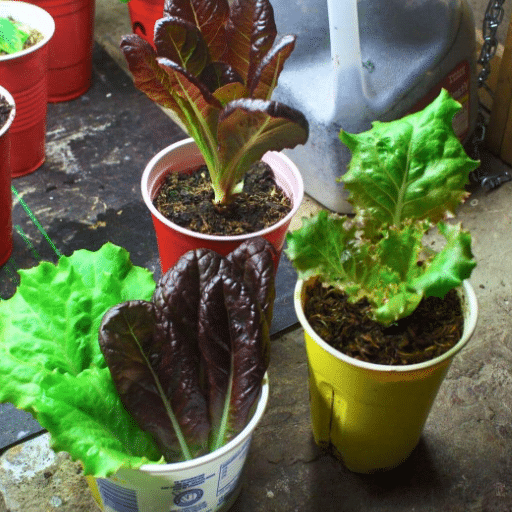
Indoor gardening demands prioritizing lettuce types that do well in controlled environments and are quick to mature. Leaf lettuce such as Black Seeded Simpson or Salad Bowl is among the best types due to its quick growth and its ability to regrow after being harvested. Butterhead types such as Bibb or Boston are ideal for indoor gardens, providing lovely, tasty leaves with a compact growth habit. Avoid managing heading types such as Iceberg; it tends to take up more space and often more time to mature fully. Make sure that your chosen variety is marked as a container or small-space grower to bring in the best results.
The four main types of lettuces are typically leaf, butterhead, romaine, and crisphead. Leaf lettuces may be Green Leaf or Red Leaf; they are prized for their loose, tender leaves that grow quickly, so they can be harvested often. Butterhead types, such as Boston and Bibb, are valued for their soft texture and mild flavor, consisting of small, loosely-formed heads. Romaine, with its long leaves and strong crunch, is mostly used for salads like Caesar. While crispheads have tightly packed dense heads and require more space and time to grow, varieties like Iceberg do. Depending on what you require and your growing conditions and preferences, you can select a lettuce type.
Romaine and Butterhead lettuces are two types of lettuce with significant differences in texture, flavor, and growth habits that fit very well into certain situations or uses. Romaine is crisp but slightly bitter, so are strong salads or food dishes that demand a sturdy leaf. And since the plant also can withstand heat, this variety is a great option for warm climates. Butterhead lettuce stands for tender, buttery leaves with a lovely mild and delicate taste; hence it is used in salads that are lighter or sometimes are a handy wrap. Butterhead types tend to be shorter in stature and prefer cooler temperatures, favoring smaller grow spaces or climates where it’s simply not so hot. It really comes down to these two and what your culinary needs are and environmental factors.
When choosing the lettuce variety to grow indoors, one will contemplate the spatial attributes, light conditions, and peculiarities pertaining to an individual variety. Loose-leaf lettuce is an ideal choice for novices because it does not take much space and grows fast and prefers moderate light generally found indoors. Butterhead lettuce, being slightly harder, could do well in a cooler indoor environment and smaller spaces if it has enough light and gets consistent moisture. In the end, assessing what you have for indoor growing conditions and then matching that to the requirements of the variety will secure a fit and productive harvest.
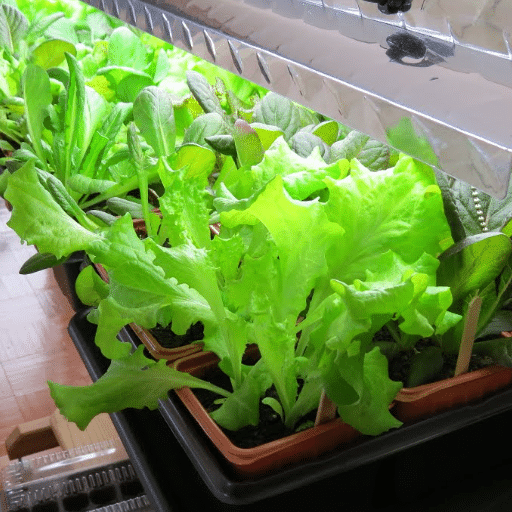
An ideal setup for growing lettuce indoors includes maintaining a fairly steady temperature between 60°F and 70°F, since lettuce is best among chilly conditions. It is imperative to locate plants in a place where they can get light for about 12 to 16 hours a day or use grow lights in case natural sunlight is insufficient. The medium must be free-draining and moist (not too wet to dry), thereby avoiding root rot. Good air circulation is required to lessen the chances of fungal diseases. Keep an eye on the nutrient level somewhat regularly and maybe occasionally feed with a balanced water-soluble fertilizer to stay on the healthy side. If all of these are taken care of, an ideal setting shall be created for indoor lettuce cultivation.
In indoor lettuce growing, pots and soil do matter. Here, containers that are at least 6-8 inches deep and have multiple holes for drainage are considered ideal. Shallow-root lettuce, in contrast, would grow well in a lightweight, well-draining potting mix amended with organic matter such as compost or peat moss. Garden soil is not a very good candidate since it may compact upon sitting and hamper healthy root development. A wide, shallow container is, however, better for growing healthier root systems and occupying more growing area, culminating in higher yields. When sterilized, pots are then at lesser risk of carrying diseases and passing these onto their innocent residents inside.
The potting mix is key for healthy plant growth and should exhibit air flow, nutrient retention, and drainage. These lightweight media are well-draining, presenting a situation where the roots are not prevented from receiving water or oxygen. Organic matter such as compost can be added to impart nutrients and encourage microbial action. Sterility is also important: the hale, sterile potting mix will keep pathogens and pests at bay, making for a good growing environment. Heavy soils that compact under pressure and resist water movement should be avoided since these qualities stand in opposition to healthy plant development.
Providing adequate light is one of the most important conditions for the healthy growth and development of plants. Light is the fundamental energy source utilized by plants for carrying out photosynthesis, which is essential for generating carbohydrates required for growth. There are different light requirements that depend on the species at hand-those in the full sun and others in the partial shade or low light. Grow lights can be employed to supplement in cases where indoor plants do not receive adequate natural light matching the necessary light spectrum and intensity. Follow the number of hours of light exposure while maintaining consistency with the photoperiod circadian rhythm of the plant under consideration. Keep an eye on the light positioning: place the light source at a distance where it will not scorch the foliage and will allow for even light dispersal over the plant surface. Check good and poor signs in plant condition to assess limiting or supra-light quality levels; make a move to put back judging points to optimal.
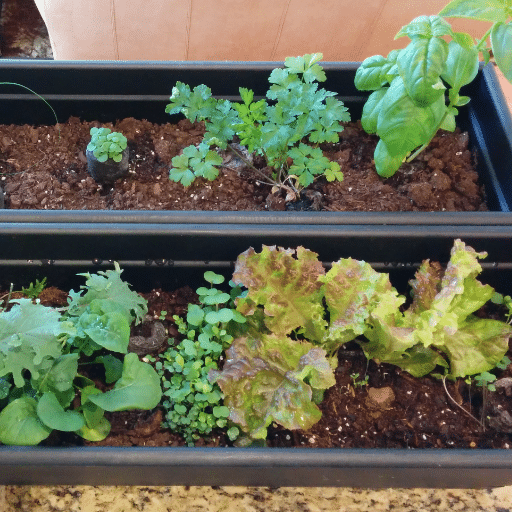
Correct watering is key in maintaining proper health for lettuce while it grows indoors. Lettuce prefers the soil to be constantly moist. It should be wet enough, but never waterlogged, or the roots might begin to rot. Water the plants as soon as the top inch layer of soil feels dry to the touch; also be sure the pots drain well.
Fertilization: A balanced fertilizer-soluble in water-for lettuce, applied every two weeks, will work better. A fertilizer with high NPK (nitrogen-phosphorus-potassium) value such as 10-10-10 promotes strong leaf development. Overfeeding should be avoided as this leads to salt buildup and kills the plants. Never disregard the label directions given for fertilizer application if you wish to create an ideal environment.
Though anything less may cause stress, watering promotes consistent leaf production and subsequent healthy growth in lettuce. Water requirements in lettuce are quite simple: watering should be done regularly and evenly. Water the crops about 1-1.5 inches weekly; keep in mind that precipitation and irrigation are included in this quantity. While watering, ensure water hits only the base of the plants so that the leaves remain dry as wet foliage can invite fungal diseases. The best time to water is in the early morning so that excess moisture has the allotted time to evaporate during the day. It is good to place mulch around plants to save soil moisture and regulate its temperature. All of these are good practices for the absolute growth conditions.
Maintaining water in the soil begins with regular checking that the soil is not too dry with too much water accumulation or too wet. One can either employ a moisture meter or do a simple test of inserting the finger into the soil to a depth of about 2 in.; it has to feel a bit moist, but not wet. Water deeply and consistently, aiming for uniform penetration so roots can grow deep. Then, place an organic mulch layer composed of straw, bark, or shredded leaves to avoid evaporation, retain moisture, and minimize temperature variation. Do not allow waterlogging; in such conditions, there is root rotting or leaching of nutrients essential to plant growth. The key to keeping moisture and vigorous plant development is in regular watering and soil management.
Plants need a set of macronutrients and micronutrients for their healthy growth and development. Macronutrients usually referred to as primary, nitrogen (N), phosphorus (P), and potassium (K), are needed in huge amounts for chlorophyll formation, root activity, and proper growth of plants. Secondary macronutrients such as calcium (Ca), magnesium (Mg), and sulfur (S) are equally necessary for cell development, photosynthesis, and enzyme activity. Micronutrients, iron (Fe), manganese (Mn), zinc (Zn), copper (Cu), boron (B), molybdenum (Mo), and chlorine (Cl), are required in very minute quantities but they are absolutely vital for enzymatic and metabolic activity. To avoid any deficiency of nutrients in the soil, make sure to keep the soil pH in terms of specific crop to an ideal range and amend soils or apply fertilizers to compensate for any deficient nutrients. Also, soil testing must be complied to know the nutrient level and to help in avoiding imbalance or toxicity.
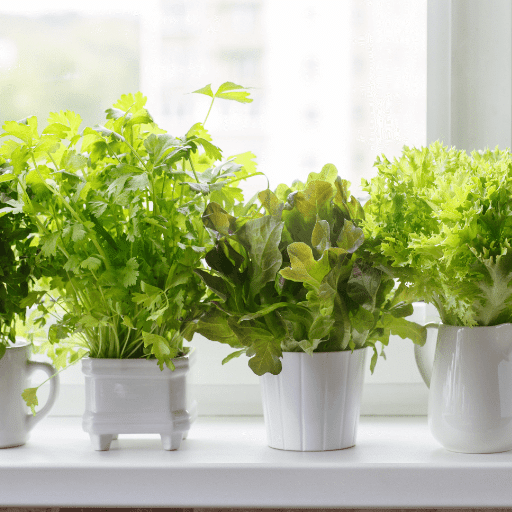
The use of grow lights enables the indoor gardener to work throughout the seasons as these lights generate artificial sunlight needed for photosynthesis. When looking for grow lights, one should consider full-spectrum LEDs, as they provide blue and red light needed for plant growth. They should be positioned 6 to 12 inches above the plants and kept on for a duration of 12 to 16 hours each day, depending on the type of plant being grown. The distance between the light and plants should be monitored, as too much heat or shading will hinder development. Consider setting grow light timers to establish consistent light cycles. Grow light technology should be combined with adequate watering and proper ventilation, thereby setting the ideal indoor conditions for gardening.
In indoor gardening, grow lights provide many advantages. They reproduce the spectrum of natural light required for photosynthesis, enabling plants to flourish irrespective of outdoor weather conditions. They are good for extending growing seasons, allowing for year-round cultivation, and enhancing the growth rate and yield of plants. Full-spectrum grow lights allow the best possibilities for plants to grow under blue light for vegetative growth and red light for flowering and fruiting. Conversely, it employs the light in a way that light cycles and intensities can be adjusted according to the needs of particular plants, allowing successful growth and healthy development even in low-light conditions.
For setting up grow lights for lettuce, the first step to be done is to select full-spectrum LED grow lights since they offer a well-balanced spectrum that promotes optimum growth. The lights need to be placed 10 to 12 inches above lettuce plants, providing them an even share of light, not so much that the plants get light burn but enough to ensure maximum exposure. Set the timer to have 14-16 hours of light and 8-10 hours of darkness to simulate real-world growing conditions. As the plants grow, adjust the lighting height accordingly, keeping it within the recommended distance. Keep the plant area well ventilated and monitor the temperature; it should be between 60-70°F for optimum results. Plants should be watched regularly for any signs of stress or uneven growth, and light intensity or placement should be adjusted accordingly.
Good lighting should be provided to optimize lettuce growth in an indoor setting. Duration-wise, a recommendation of 14-16 hours daily is set for a strong development, then 8-10 hours of darkness is followed to mimic natural photoperiods required for the plants’ well-being. This is so that during the light phase, plants can carry out photosynthesis properly, while energy is channeled toward growth and cellular repair in the dark phase. Any deviation from this photoperiod results in irregular growth and stunted plants. Thus, for track and timing with high adherence is very much required to get optimum results.

Following these instructions will help keep your indoor lettuce plants happy and productive.
Remember, a very common mistake is overwatering. The excess water causes root rot and as a consequence, hinders the growth of the plants; always ensure that the soil remains moist but not saturated. Under lighting conditions that are less than ideal, another mistake that is frequently made is that of neglecting the need for light: lettuce needs sufficient light to carry out photosynthesis properly, so install grow lights if your sunlight is restricted. In addition to this, not taking into consideration the temperature and humidity levels is detrimental to growth; lettuce likes to be grown in cool and steady conditions. Ignoring pest and disease inspections can also put an end to damage that may rapidly spread if left untreated. And last, but certainly not least, using bad soil or foregoing fertilizer application will stunt the growth and diminish the yield, making proper soil and nutrition paramount.
For consistent growth, it is paramount to maintain optimal growing conditions based on the specific requirements of lettuces. Ensure sufficient light either from natural sunlight or, depending on the setup, grow lights of good quality. Keep an eye on, and control the temperature and humidity levels, ensuring they stay within the ideal 60-70°F range and maintain moderate humidity so that the plants are not stressed. Also, check the lettuce regularly on a smaller scale for any indication of pest or disease attack, and immediately take remedial actions against any detectable infestation before the situation can really get out of hand. Use nutrient-rich, fast-draining soil and balanced fertilizers for proper nutrition and hearty growth. Consistent watering is important nevertheless: the soil should remain moist but should never be soaked.
Lettuce plants are very much affected by drafts and temperature variation, but these effects can be mitigated. In gusty winds or indoor draft situations, keep your lettuce grown away from such situations, like close to windows or doors. If needed, provide physical barriers such as cloches, row covers, or windbreakers to keep conditions steady. Keep regular checks on temperatures being within 60–70°F (15–21°C), the optimum range for lettuce. Too high a temperature could cause bolting, while too low will practically stunt growth. Keep shade cloth handy in hot times and insulating covers ready for the cold. Controlled conditions favor steady growth and save the plants from tons of stress.
Rural Sprout: This article discusses the importance of light and other key considerations for growing lettuce indoors. Read more here.
Gardener’s Supply Company: A detailed guide with five steps to successfully grow lettuce indoors, including tips on lighting, containers, and planting. Explore the guide here.
HortiDaily: This article evaluates the feasibility of rotational cultivation systems for indoor lettuce production, providing insights into its practicality. Check it out here.
When growing lettuce indoors, a couple of key aspects should be taken into consideration. Maintaining a consistent moisture level is crucial; hence, the soil must always be moist. The lettuce also needs plenty of light, with the latter usually being for more than 12 hours using either an artificial source of light or by placing the plants close to a south-facing window. The type of soil you use matters as well. Aim to select a good potting mix with a high amount of organic matter. Otherwise, simply remember to pick the right variety because some types of lettuce are easier to grow indoors than others.
The next step is to fill a tray with potting soil in said piece of equipment. The seeds are then poured evenly across the surface and lightly covered with more soil, because light needs to be present for them to sprout. Moisture is needed in the soil, but it must not be soggy; the seeds must feel warm enough for germination. The seeds ideally germinate anywhere between 65-70°F (18-21°C). After germination, they should be gradually given more light and space to grow, thinning out those that become densely packed.
There are a few tips to ensure growing lettuce indoors is successful. First, select a container that is large enough for the plants to grow; a pot at least 6 inches deep is advisable. Use potting soil that locks in moisture yet drains well. Water your lettuce when it needs it, keeping the soil moist but never soaked. One of the best ways to grow lettuce indoors would be through hydroponics, which supplies nutrients and moisture on a constant basis without soil requirements. Other greens like spinach or arugula can be planted simultaneously with lettuce to make use of your scarce indoor garden space.
Watering is essential for the healthy indoor growth of lettuce. Lettuce requires moisture all the time, so you should check the soil regularly. Once the top inch of soil feels dry, it should be watered. This may mean watering once every two weeks or sometimes more frequently, depending on the dry air in your household. Excess watering may result in wilting or root rot. The potting mix you use and the size of your plants will determine when you should water them.
Other salad greens can indeed be grown indoors alongside lettuce. Kale, spinach, and arugula are easy to cultivate and can work well in conditions similar to those favored by lettuce. Consider the spacing of your seeds so that the plants will have room to grow and receive adequate sunlight. Different greens put together can give you an interesting harvest to enjoy and split the taste profiles in your own homemade salads. Just keep an eye on their growth and adjust care where needed for either of the two.
🌱 Ready to start your indoor lettuce garden? Follow these guidelines and enjoy fresh, homegrown greens year-round!